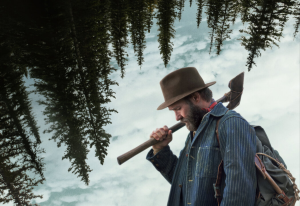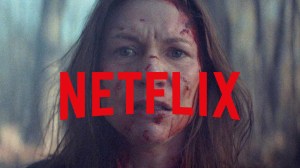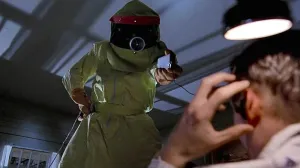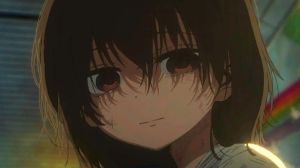If it’s a horror show, then someone dying is pretty much a given. But not every death is just another scary scene. Some are so brutal, graphic, or emotionally heavy that they stick with you long after the show is over. A lot of them even change the direction of the story, and sometimes push away part of the audience. This isn’t just about jump scares or gore for shock value. These are moments that hit hard enough to make you uncomfortable. It’s where horror stops being entertainment and turns into something way more unsettling on purpose.
Videos by ComicBook.com
Each of these moments left a mark not just on their shows, but on the viewers who had the guts to stick it out. Here are 7 deaths that really show what “brutal” means when it comes to horror on TV. Naturally, spoilers ahead.
1) Joel (The Last of Us)

For those who already knew the game, it wasn’t a surprise, but for everyone else, it was the peak of the unexpected. Joel’s (Pedro Pascal) death in The Last of Us was a major turning point for the show and one of the most brutal scenes seen on TV in the past few years. That’s because the scene doesn’t just show Joel getting beaten to death with a golf club – it captures the whole thing in a raw, uncomfortable way. There’s no emotional soundtrack to soften the blow, just physical and emotional pain, especially in Ellie’s (Bella Ramsey) eyes as she watches, powerless. The violence is direct, messy, and graphic.
But the real weight of the scene isn’t just in how hard it hits; it’s in the choice to kill him off so early in Season 2, and in such a cold, inhumane way. Joel had been the emotional core of the story up to that point, and the way he’s taken out with no glory and no redemption, only drives home how brutal that narrative decision really is. It’s not trying to shock just for the sake of it; it’s uncomfortable because it treats the character with a harsh, realistic detachment. And that’s what makes it stick.
2) Glenn (The Walking Dead)

Many deaths have left a mark on horror TV, but it’s hard to think of any that match the brutality of Glenn’s (Steven Yeun) in The Walking Dead. Negan (Jeffrey Dean Morgan), with his barbed wire-covered bat Lucille, doesn’t just kill him with a few hits to the head – he turns it into a full-on torture show. The image of Glenn’s crushed skull and his eye popping out is the kind of thing you can’t unsee. And the show drags out the suffering, showing Maggie’s (Lauren Cohan) heartbreak, the group’s complete shock, and the emotional collapse that follows the violence.
The truth is this was a risky move that split the audience. A lot of people thought the scene was way too graphic, and some even stopped watching the show. But as a way to establish Negan as a real threat and shake up the story, it worked. It instantly shifted the tone of the series, killed any illusion of safety, and proved that no one was off-limits – not even a fan favorite. Brutal on every level.
3) R.J. (American Horror Story: Cult)

American Horror Story is full of deaths. Some are sad, some terrifying, others just plain disturbing. But it’s hard to forget how R.J. (James Morosini) is killed in the Cult season. Watching a character die by nail gun, with each shot chosen by different cult members, gives the whole thing a slow, agonizing pace that makes it feel even more brutal than it needs to be. The scene is loaded with discomfort: the sound of the nails, the hesitation from some people, Kai’s (Evan Peters) complete indifference, and R.J.’s terrified face make it genuinely hard to sit through – which is exactly the point.
Out of all the deaths in the show, this one stands out because it’s not fast, and it’s not caused by a monster or some supernatural force. It’s cold, calculated violence carried out by regular people caught in a system of twisted belief. The moment hits harder because of that context. There’s no break, no release, just a chilling reminder of how far people can go when they think they’re doing the right thing. The brutality here isn’t exaggerated because it’s disturbingly realistic.
4) Chrissy (Stranger Things)

Chrissy’s (Grace Van Dien) death was the first real showcase of Vecna’s (Jamie Campbell Bower) power, and one of the most visually intense scenes Stranger Things has ever done. Compared to others on this list, it might not seem brutal at first glance, but considering how the show had never gone that far with gore before, it hit hard. She’s levitated, her bones snap one by one, her eyes cave in, her mouth freezes in horror – and it all happens while Eddie (Joseph Quinn) watches, powerless and screaming.
Netflix didn’t hold back here, and part of what makes the scene land is the contrast with Chrissy’s sweet, vulnerable image. The show sets her up as a kind girl struggling with her own issues, and then destroys her in the most violent way possible: fast, merciless, and completely hopeless. It’s not about emotional payoff; it’s about shock and establishing that Vecna is a whole new kind of threat. The brutality of this one moment resets the tone for the entire season.
5) Dr. Winters (Guillermo del Toro’s Cabinet of Curiosities)
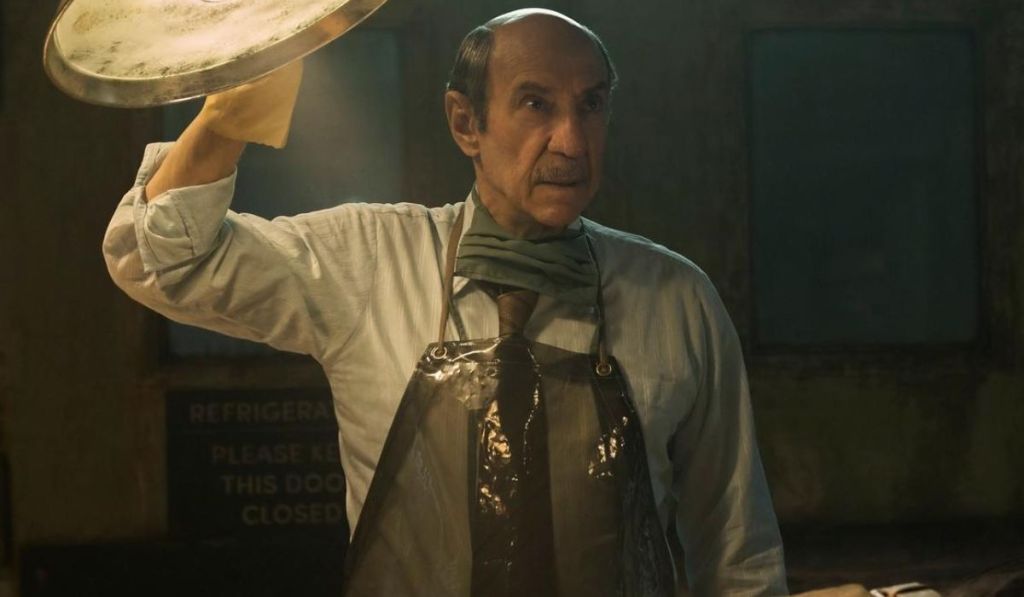
Anyone familiar with Guillermo del Toro’s work knows he doesn’t shy away from grotesque horror – but only when it serves a purpose. In Cabinet of Curiosities, Dr. Winters’ (F. Murray Abraham) death stands out because it’s not driven by fear or violence from others, but by something far more disturbing: surrender. To prevent the control of a parasitic force, he calmly performs an autopsy on himself. He cuts into his own body, removes his eyes, and slits his throat with chilling precision, all without hesitation or panic. It’s methodical and quiet, which only makes it more disturbing.
To sum up, what makes this scene so brutal isn’t just the gore – it’s the total absence of emotion. There’s no fight, no resistance, just a man overtaken by something inhuman, reduced to a tool. The lack of empathy turns the moment cold and clinical, and that’s exactly what makes it hard to watch. The horror isn’t in what’s happening, but in how little it seems to matter to the character. It’s the kind of death that sticks with you because it feels like something that shouldn’t even be possible.
6) Sophie and Milo (American Horror Story: Roanoke)

Another American Horror Story moment that earns a spot on this list is the execution of Sophie (Taissa Farmiga) and Milo (Jon Bass) in the Roanoke season – a prime example of how the show blends graphic violence with raw intensity. The two are brutally impaled and then burned alive, but what really makes the scene hard to stomach is how it’s shown: through the characters’ own cameras. That first-person perspective gives the sequence a claustrophobic (almost voyeuristic) feel, where you don’t just watch the horror, because you’re trapped in it. This is already one of the darkest seasons, and this moment underlines that with disturbing clarity.
The stylistic choice to use the characters’ footage isn’t just a gimmick; it amplifies the brutality. By putting the viewer in the middle of the scene, the show eliminates distance, making the fear and pain feel immediate. It’s not just a shocking death for shock’s sake, but one that uses format to intensify impact. The mix of physical agony and the horror of knowing you’re watching your own end makes this one of the most unforgiving moments in the entire series. It’s graphic, it’s relentless, and it’s meant to make you squirm.
7) Zoe (Channel Zero: Butcher’s Block)

Channel Zero isn’t very well known, but anyone who’s seen it remembers just how disturbing its anthology format can be. Few deaths on horror TV are as unsettling as Zoe’s (Holland Roden) in Butcher’s Block. Over the course of the season, she gets pulled deeper into a cannibal cult, and her final surrender is when she starts eating parts of her own body. The scene is slow and utterly grotesque, since she cuts off pieces of herself and consumes them during a silent ritual. It’s hard to watch, and that’s what makes it so brutal, even if the actual death isn’t shown.
Zoe, who struggles with mental illness, finds a twisted kind of “cure” in this nightmare. The show handles this symbolically but doesn’t hold back on showing the gore and discomfort. The scene is brutal because it mixes self-destruction, loss of control, and an unavoidable tragedy. It’s where psychological and physical horror come together in the most disturbing way possible.


